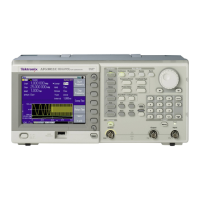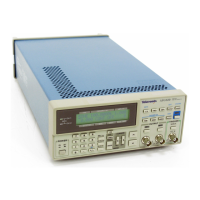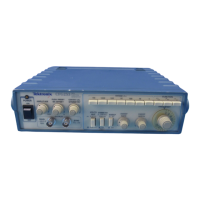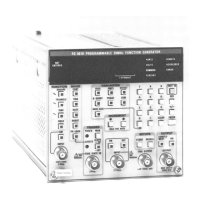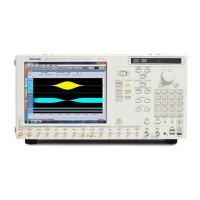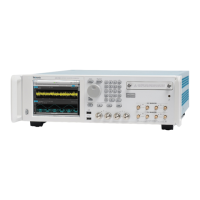GPS7 GPS Synchronization and Timecode modu le
When the input t
ime source is set to VITC or LTC, the instrument works similar
to how it works in internal mode, pre-correcting the master time of day by the
time zone offset. This pre-correction assumesthattheincomingtimecodehas
the correct local time, and causes the outgoing time codes to nominally match the
incoming ones, regardles s o f time-zone offset. This means that when switching
from GPS to VITC or LTC mode, the time-zone offset usually does not need to
change. How
ever, if the time code synchronization mode is set to "Synchronize
now" or "Synchronize once", and the time-zone offset is changed after the
time-code sync has occurred, then the time-zone change offsets the incoming and
outgoing time codes until the user reasserts the time synchronization.
Additionally, if the time is being set by LTC or V ITC with SMPTE309 date data,
the system can be configured to use the time zone and DST from the input. (See
page 3-133, GPS7 module TIME OF DAY submenu.)
Leap Sec
ond Apply *. Leap seconds, when required, are added on June 30, and/or
December 31, at 23:59:60 UTC. That is, the minute preceding midnight has
61 seconds instead of 60, numbered 0..60 instead of 0..59. This might be an
inconvenient time to make a local clock adjustment. For example, this is during
prime time for the North American Eastern Time Zone. Therefore, the GPS7
gives the option of deferring the leap second adjustment (if any) on these dates
for u
pto24hours.
DST Change *. Daylight Saving Time (DST) changes twice a year in many time
zones, but some locations do not observe daylight savings time. The GPS7 has a
user programmable DST adjustment to the time zone offset that is made by adding
or subtracting a specified amount from the current time setting. The scheduled
da
te and time of the change must be programmed into the GPS7. There are two
methods for scheduling the DST offset:
O
nce. In Once mode, the DST offset is applied only once on the date and time
you specify. Set the DST offset to either add or subtract an hour from the time
zone offset, depending on whether DST is starting or ending in your location.
Recurring. In Recurring mode, the DST offset is applied when the DST
START date and time that you specify occurs, and is removed when the DST
END date and time that you specify occurs. The recurring DST offset can
only be a p ositive number, such as one hour. The DST START/END dates are
formatted as the DST rules are written (e.g., DST starts on the First Sunday in
March at 02:00). For example, to change to daylight savings time, schedule
the system to add one hour to the time zone offset at 02:00:00 (local time) on
March 6, 2011. To return to standard time, schedule the system to remove the
DST offset at 02:00:00 on November 6, 2011. At the scheduled time and date,
the DST change is added to the time zone offset as seen from the instrument
display. You can then program the next scheduled DST change.
The incoming VITC or LTC reference may have DST shift already applied. To
avoid duplicating DST shifts, disable the DST SCHEDULER if the time of d ay
reference has DST applied.
3–110 TG8000 Multiformat Test Signal Generator User Manual
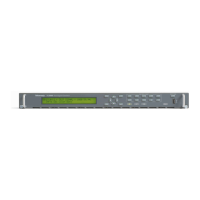
